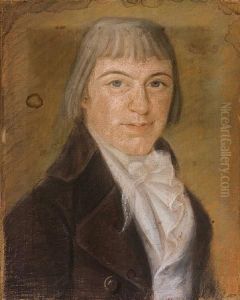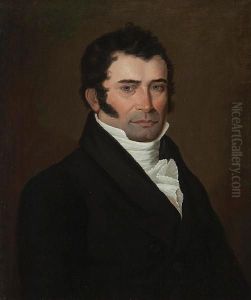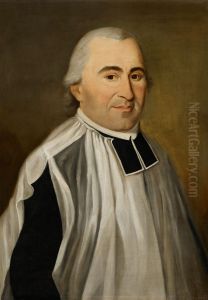Louis Dulongpre Paintings
Louis Dulongpré was a French-Canadian artist known for his portraits and theatrical paintings, born in 1759 in Saint-Martin-de-Ré, France. He is recognized primarily for his work during the late 18th and early 19th centuries. Dulongpré moved to Quebec, Canada, where he became one of the early artists to establish a career in the burgeoning art scene of North America, particularly within the context of New France and later Lower Canada.
Dulongpré's artistic career began in earnest when he moved to Quebec around 1790. There, he became known for his portraits of prominent figures in the society of the time, which he painted in a style that was influenced by the European neoclassical tradition. His works are characterized by careful attention to detail and a desire to capture the character and status of his subjects. Dulongpré was also interested in the theater and painted a number of works related to that subject, which were quite innovative for the time and locale.
Throughout his career, Dulongpré exhibited a strong sense of entrepreneurship. He often traveled between Canada and the United States to paint portraits for wealthy patrons and to seek out new opportunities for his work. This itinerant lifestyle was typical of artists of the period who needed to go where the commissions were. Dulongpré's portraits thus became a valuable record of the social and historical figures of his era in both Canada and the United States.
Dulongpré's work is a significant part of the cultural heritage of early Canadian art. His portraits are held in various institutions and continue to be studied for their historical value and artistic merit. Louis Dulongpré passed away in 1843, leaving behind a legacy that provides insight into the visual culture and society of early North America.


